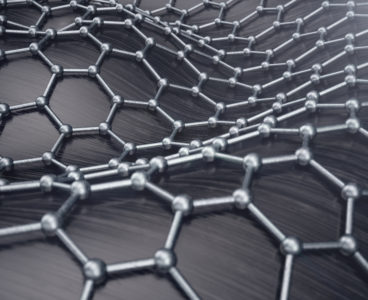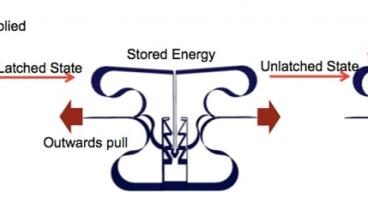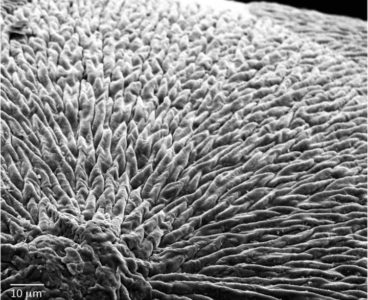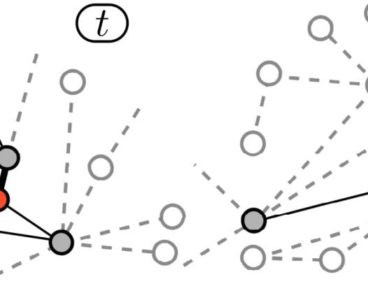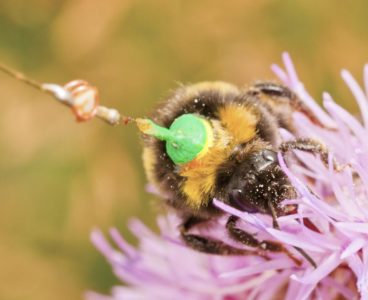Queen Mary University of London has led a study which describes the first direct measurement of how energy is transferred from the chaotic electromagnetic fields in space to the particles that make up the solar wind, leading to the heating of interplanetary space. The study, published in Nature Communications and carried out with University of…
Graphene’s Properties Change in Humid Conditions
Graphene exhibits very different properties in humid conditions, according to researchers from Queen Mary University of London. The “wonder material,” which is made from carbon and was discovered in 2004, is hailed for many of its extraordinary characteristics including being stronger than steel, more conductive than copper, light, flexible and transparent. This study, published in…
Scientists Design Material That Can Store Energy Like an Eagle’s Grip
What do a flea and an eagle have in common? They can store energy in their feet without having to continuously contract their muscles to then jump high or hold on to prey. Now scientists at Queen Mary University of London and University of Cambridge have created materials that can store energy this way, be…
Scientists Develop Material That Could Regenerate Dental Enamel
Researchers at Queen Mary University of London have developed a new way to grow mineralised materials which could regenerate hard tissues such as dental enamel and bone. Enamel, located on the outer part of our teeth, is the hardest tissue in the body and enables our teeth to function for a large part of our…
Scientists Discover how a Pinch of Salt can Improve Battery Performance
Researchers at Queen Mary University of London, University of Cambridge and Max Planck Institute for Solid State Research have discovered how a pinch of salt can be used to drastically improve the performance of batteries. They found that adding salt to the inside of a supermolecular sponge and then baking it at a high temperature…
Battery Technique Echoes “Game of Thrones” Dragon Hatching Method
Researchers at Queen Mary University of London, University of Cambridge and Max Planck Institute for Solid State Research have discovered how a pinch of salt can be used to drastically improve the performance of batteries. They found that adding salt to the inside of a supermolecular sponge and then baking it at a high temperature…
New Printing Technique Uses Cells and Molecules to Recreate Biological Structures
Researchers from Queen Mary University of London have developed a printing technique using cells and molecules normally found in natural tissues to create constructs that resemble biological structures. These structures are embedded in an ink which is similar to their native environment and opens the possibility to make them behave as they would in the…
Mathematicians Develop Model for How New Ideas Emerge
Researchers from Queen Mary University of London have developed a mathematical model for the emergence of innovations. Studying creative processes and understanding how innovations arise and how novelties can trigger further discoveries could lead to effective interventions to nurture the success and sustainable growth of society. Empirical findings have shown that the way in which…
Molecular Printing Technology Could Recreate Chemical Environments Resembling Human Body
‘3DEAL’ is a simple and inexpensive fabrication technique able to generate complex molecular patterns within soft matter, such as hydrogels, with microscale resolution and up to centimetres in depth. This capacity enables the possibility to engineer 3D hydrogel environments with spatial control of the chemical composition, opening the opportunity to recreate biological scenarios such as…
Candy Cane Supercapacitor Could Enable Fast Charging of Mobile Phones
Supercapacitors promise recharging of phones and other devices in seconds and minutes as opposed to hours for batteries. But current technologies are not usually flexible, have insufficient capacities, and for many their performance quickly degrades with charging cycles. Researchers at Queen Mary University of London (QMUL) and the University of Cambridge have found a way…
Organic Compound Found in Early Stages of Star Formation
Rudolph’s Antlers Inspire Next-Generation of Unbreakable Materials
Scientists from Queen Mary University of London (QMUL) have discovered the secret behind the toughness of deer antlers and how they can resist breaking during fights. The team looked at the antler structure at the ‘nano-level’, which is incredibly small, almost one thousandth of the thickness of a hair strand, and were able to identify…
Multi-Drug Resistant TB Cure Rates Higher Than Expected
The Tuberculosis Network Clinical Trials Group (TBNET), an international consortium of clinicians and scientists, documented the management of 380 patients with Multidrug-Resistant Tuberculosis (MDR-TB) at 23 different sites across Europe over five years. The study, published as correspondence in the New England Journal of Medicine, found that cure rates in Europe were 61 per cent according…
Radar Tracking Reveals ‘Life Stories’ of Bumblebees as They Forage for Food
Scientists have tracked the flight paths of a group of bumblebees throughout their entire lives to find out how they explore their environment and search for food. This is believed to be the first time any insect has been tracked throughout its whole life. In this unconventional study, the researchers from Queen Mary University of…
Scientists Move One Step Closer to Creating Invisibility Cloak
Scientists at Queen Mary University of London (QMUL) have made an object disappear by using a composite material with nano-size particles that can enhance specific properties on the object’s surface. Researchers from QMUL’s School of Electronic Engineering and Computer Science, worked with UK industry to demonstrate for the first time a practical cloaking device that…
Scientists Move One Step Closer to Creating an Invisibility Cloak
Scientists Use Silver to Make Lights Shine Brightly
Writing in the journal Nature Materials, the international group of scientists modified a mineral called zeolite, more commonly found in washing powder, to incorporate tiny clusters of silver atoms. At this very small scale (less than 10 atoms), the silver clusters act very differently and can even emit light. Lead author Dr Oliver Fenwick from QMUL’s School of Engineering…


